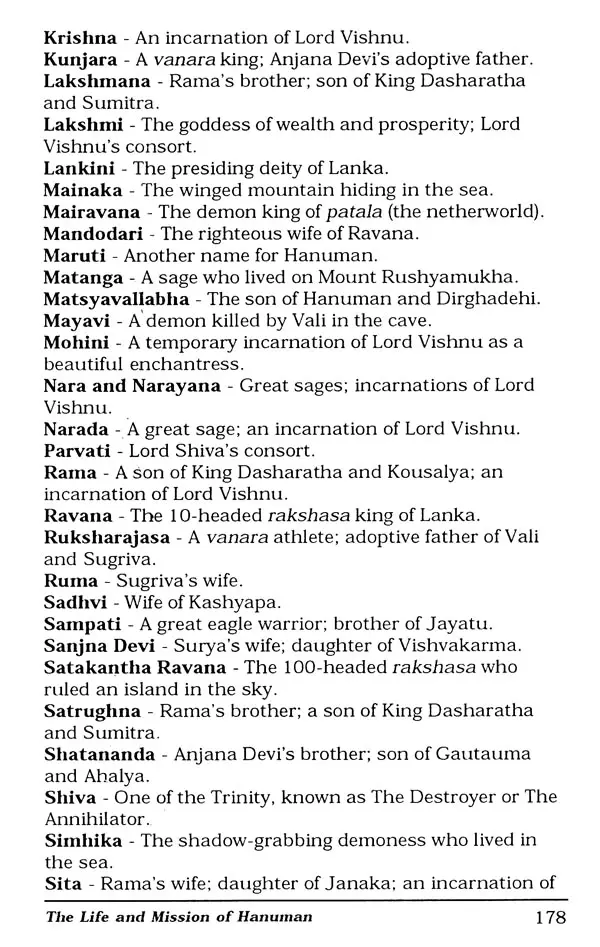
The Life and Mission of Hanuman
Book Specification
| Item Code: | UAI230 |
| Author: | Ganapathi Sachchidananda Swamiji |
| Publisher: | Avadhoota Datta Peetham, Mysore |
| Language: | English with Roman Transliteration |
| Edition: | 2010 |
| Pages: | 180 |
| Cover: | PAPERBACK |
| Other Details | 8.50 X 5.50 inch |
| Weight | 200 gm |
Book Description
Hanuman, Anjaneya and Maruti are the most well- known names of this divine personality. Each name holds a specific meaning.
Being the son of Anjana Devi, he is known as Anjaneya. In Sanskrit, anjana means affection and love. Therefore, Anjaneya is one who creates affection or pure happiness.
Hanu means the upper jaw in Sanskrit. Hanuman, or Hanumanta, means the. one whose jaw is swollen. Hanu has another meaning-jnana or knowledge. Hence, Lord Hanuman is the one who has perfect divine knowledge. Plus, hanu means one who destroys. Hanuman is also an aspect of the deity Lord Shiva, who is known as the Annihilator. So Lord Hanuman is the destroyer or remover of sins and problems.
Marut means air in Sanskrit. As Lord Hanuman is the son of Vayu, the wind god, he became known as Maruti.
Maruts is also a name used to refer to the wind devatas (celestials or angels), so Maruti is one who has the aspects of all the celestials.
Ma means Goddess Mother Lakshmi, the consort of Lord Vishnu, and Hanuman is an aspect of Lord Vishnu. Ma also means auspicious and tuti means sound; combined, Maruti means the one who gives out auspicious sound (omkara). Ruti also means sorrow in Sanskrit, so yet and- other meaning for Maruti is the remover of sorrows.
By simply examining the meaning of his names, one can immediately understand Lord Hanuman's principal and philosophy. To realize these aspects to a fuller extent, we turn to what has been written about his life.
The most familiar information is from two chapters in the "Valmiki Ramayana" (Sundara Kanda and Uttara Kanda). However, this. represents only a small slice of Lord Hanuman's life, so most people do not have a comprehensive perspective or understanding of him. In addition to the multiple "Ramayana’s." accounts of Lord Hanuman's life can be found in many other sacred texts, such as the "Parasara Samhita" and "Puranas." Those details have been compiled in this story.
The most astonishing aspect of Lord Hanuman is that he is cirenjivi (immortal) in all the yugas (ages), i.e., Kruta, Ireta, Dvapara and Kali (the current age). In every kalpa (cycle of four yuges), Lord Vishnu incarnates as Sri Rama. Whenever Lord Rama incarnates, Hanuman assumes his form and renders service to him. That is why Hanuman is known as the best of Ramada as (servants of Lord Rama). Although somewhat astonishing and unbelievable, this is an established truth. To understand this wonderful truth, let us study the life and history of Lord Hanuman.
Book's Contents and Sample Pages















